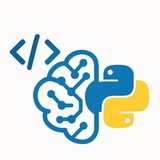In Python, handling CSV files is straightforward using the built-in
#python #csv #pandas #datahandling #fileio #interviewtips
👉 @DataScience4
csv module for reading and writing tabular data, or pandas for advanced analysis—essential for data processing tasks like importing/exporting datasets in interviews.# Reading CSV with csv module (basic)
import csv
with open('data.csv', 'r') as file:
reader = csv.reader(file)
data = list(reader) # data = [['Name', 'Age'], ['Alice', '30'], ['Bob', '25']]
# Writing CSV with csv module
import csv
with open('output.csv', 'w', newline='') as file:
writer = csv.writer(file)
writer.writerow(['Name', 'Age']) # Header
writer.writerows([['Alice', 30], ['Bob', 25]]) # Data rows
# Advanced: Reading with pandas (handles headers, missing values)
import pandas as pd
df = pd.read_csv('data.csv') # df = DataFrame with columns 'Name', 'Age'
print(df.head()) # Output: First 5 rows preview
# Writing with pandas
df.to_csv('output.csv', index=False) # Saves without row indices
#python #csv #pandas #datahandling #fileio #interviewtips
👉 @DataScience4
❤1👍1
